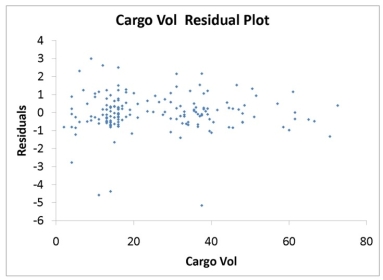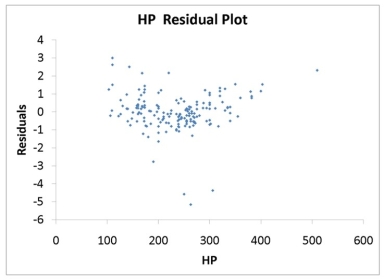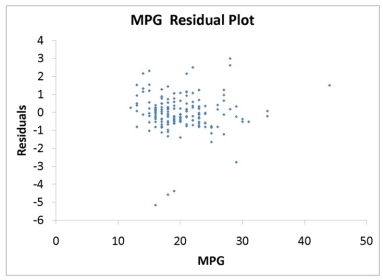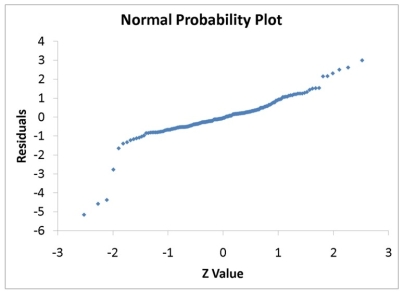TABLE 13-16
What are the factors that determine the acceleration time (in sec.) from 0 to 60 miles per hour of a car? Data on the following variables for 171 different vehicle models were collected:
Accel Time: Acceleration time in sec.
Cargo Vol: Cargo volume in cu. ft.
HP: Horsepower
MPG: Miles per gallon
SUV: 1 if the vehicle model is an SUV with Coupe as the base when SUV and Sedan are both 0
Sedan: 1 if the vehicle model is a sedan with Coupe as the base when SUV and Sedan are both 0
The regression results using acceleration time as the dependent variable and the remaining variables as the independent variables are presented below.

The various residual plots are as shown below.





The coefficient of multiple determination for the regression model using each of the 5 variables Xj as the dependent variable and all other X variables as independent variables (Rj2) are, respectively, 0.7461, 0.5676, 0.6764, 0.8582, 0.6632.
-Referring to Table 13-16, what is the correct interpretation for the estimated coefficient for MPG?
Definitions:
Q7: Referring to Table 11-12, if the null
Q13: Nora has been working at a manufacturing
Q22: _ premiums reward employees for moving from
Q30: Referring to Table 13-15, the null hypothesis
Q36: Which of the following is the fundamental
Q51: Referring to Table 12-2, if the price
Q74: Referring to Table 12-12, the value of
Q84: Referring to Table 12-3, suppose the director
Q194: Referring to Table 12-4, the least squares
Q210: Referring to Table 12-4, set up a